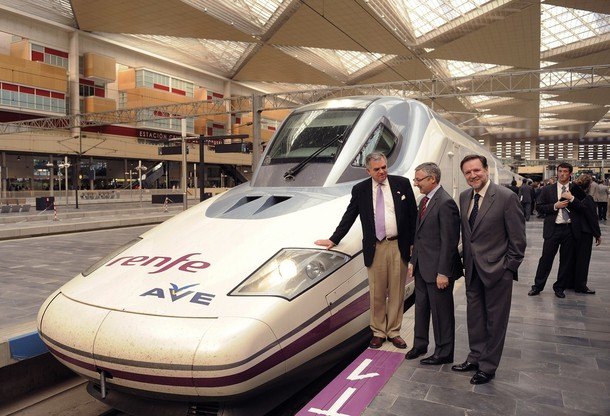Transportation Secretary Ray LaHood on the Politics of Car
In yesterday’s NYT Magazine [sub] (theme: Infrastructure: it’s more exciting than you think), Transportation Secretary Ray LaHood talks bridges, behavior and Buick Regals in a short interview entitled “The Road Warrior.” And at the risk of reigniting an overly-political discussion, the man’s opinions are indicative of where public policy is headed (regardless of where the debate here at TTAC ends up). It’s easy to take LaHood’s talk of “livable communities,” and praise for light rail and one-car families as proof that he (per George Will’s judgment) is the “secretary of behavior modification.” But it’s important to remember a few key points . . .
First, LaHood is a Republican working on the Obama team. Partisanship isn’t the issue here. Second, LaHood drives a ’98 Regal. This is not your everyday eco-poseur we’re dealing with. Third, as my carless-and-proud neighbors might argue, LaHood’s basic vision isn’t as unrealistic or utopian as you might think. Like it or not, America’s much-vaunted love affair with the automobile seems to have aged out of infatuation, into a more utilitarian, late-life relationship. Meanwhile Ray LaHood and light rail are in the next booth at the Country Time Buffet, fluttering their eyelashes. This is going to be interesting.
NYT: As the newly appointed secretary of transportation, would you agree that America’s crumbling infrastructure has become an acute embarrassment?
NYT: Do you worry about bridges falling down?
NYT: The Department of Transportation, which opened shop in 1967, isn’t known for having done anything great.
NYT: President Obama has talked about his desire to wean Americans off automobiles.
NYT: Do you think G.M. can really produce smaller, fuel-efficient cars?
NYT: But if Americans increasingly get around by rail, bus and bicycle, as you’ve planned, who will be buying cars in the future?
NYT: What do you drive?
NYT: What kind of mileage does that get?
NYT: There are inexpensive cars that get better mileage. What about a Toyota?
NYT: Do you own a motorcycle?
NYT: What about skateboards, which are especially fuel-efficient?
More by Edward Niedermeyer
Latest Car Reviews
Read moreLatest Product Reviews
Read moreRecent Comments
- Mike Beranek To have any shot at future relevance, Cadillac needs to lean into it's history and be itself. That means investing real money into differentiating them from the usual GM "parts bin" strategy.Build big cars with big, bespoke engines. Build a giant convertible with suicide doors. Build Escalades that aren't just Yukons with bling. Bring back the CT6, but make it available at a more reasonable price, to balance out the halo models.Build cars that famous people want to be seen in. That's what made Cadillac what it was.
- Wolfwagen Cadillac's naming scheme makes more sense than Lincoln's ever did
- Redapple2 Cadillac, Acura and Infiniti have very tough rows to hoe.
- Redapple2 First question: How do you define Sales Success?1 they ve lost more than 35% of all dealers in the last 5 years.2 transition to BEV will cost Billions. No money for new designs3 cars for #2 above have already been designed in BEV form and wont be redone significantly for - what- 10 years? 3b-Lyric and whatever its called are medusa level ugly. How could this design theme be fuglier than arts and science? Evil gm did though4 the market is poisoned. 1/3 of folks with $ would never consider one/ridicule the product. Under 40 yr olds dont even know the brand exists.It is dead and doesn't know it. Like a Vampire.
- Redapple2 Focus and Fiesta are better than Golf? (overall?) I liked the rentals I had. I would pick these over a Malibu even though it was a step down in class and the rental co would not reduce price.


































Comments
Join the conversation
They will spend $Billions on studies and light rail... but the simplest thing, that would actually increase vehicle occupancy, is to allow for the creation of "dollar cabs", or otherwise reduce the barriers to entry for taxi vehicles. Imagine a simple setup where you pay $50 a year to get your vehicle licensed as a taxi. Riders in the taxi get limited ability to sue in the case of an automobile accident (or maybe the add'l insurance wouldn't be that much anyways). You set your own route and charge a flat rate for it. That would immediately bring the suburbs and even some rural areas into having some kind of transportation that doesn't require you to own your own car. Now Granny can get to her doctor's appointment and go to the grocery store twice a week without getting in my way and tying up traffic since she doesn't want to go over 25. etc. etc.
Leave it to a guy of Lebanese decent to manage traffic and transportation in the US. Have any of you taken a look at the public and private transport infrastructure we have in oh dear Lebanon? there are a few traffic web cam's online, which i will share sometime. however, Lahood does seem to be down to earth, i met him in 04 at my graduation, where he gave a speech about Civility, again relatively redundant in a country which lost most of its civil society to immigration.... in any case, i like the 98 regal despite it being a boat. and i do agree that Americans do know what they want and GM and the other 2 were building what the Americans want, but they were building too many similar models, and not enough choice. in a world of what ifs, what if Chrysler didn't kill off the Neon post 2006, and that car was on offer last year when Civics and Jazz's were running out of showroom doors? I'm not saying the Neon is better or necessarily more efficient than the japs, but if you wanted an American car, which was efficient, you had it, but some Americans chose to kill it.